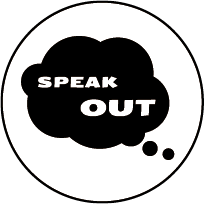Who is the bully?
Who is the victim?
Studies describe children who bully as self-centered, competitive, exhibitionistic, and aggressive (Salmivalli, Kaukiainen, Kaistaniemi, & Lagerspetz, 1999). Additionally, they often lack empathy and exhibit manipulative, self-serving behavior in their relationships (Baumeister, Smart, & Boden, 1996).
Some researchers conceptualize bullying behavior as existing on a continuum, while others categorize children who bully based on their level of involvement in the bullying process (Salmivalli et al., 1996):
- Ringleaders: Initiators who organize and lead the bullying behavior.
- Followers: Participants who join in after the bullying begins.
- Reinforcers: Passive participants who encourage bullying by laughing, watching, or otherwise supporting the behavior.
Types of Bullies: Pure Bullies vs. Bully-Victims
The literature often distinguishes between two primary groups: pure bullies and bully-victims (Wolke, Woods, Stanford, & Schulz, 2001).
Pure Bullies
- Motivation: Driven by a strong desire to dominate and control others. They feel empowered when peers appear to support their actions.
- Empathy: Tend to disregard fairness and the feelings of others.
- Background: Often have experienced abuse or neglect (Rigby, 2011).
Bully-Victims
Bully-victims, who both bully others and are victims of bullying themselves, show unique and often more troubling characteristics:
- Emotional Challenges: Higher levels of depression, anger, anxiety, and impulsivity (Haynie et al., 2001; Holt & Espelage, 2007; Swearer et al., 2001).
- Self-Regulation: Poorer emotional regulation and more pronounced negative affect compared to pure bullies (Haynie et al., 2001; Toblin et al., 2005).
- Problematic Behavior: More likely to engage in illegal or risky behaviors, such as fighting, lying to parents, substance use, or carrying weapons (Haynie et al., 2001; Stein et al., 2007).
- Remorse: Display lower levels of remorse for antisocial acts (Fanti et al., 2009).
- Problem-Solving Deficits: Tend to externalize blame, struggle with problem-solving, and endorse aggressive responses to conflict (O’Brennan, Bradshaw, & Sawyer, 2009; Cassidy & Taylor, 2005).
- Retaliatory Attitudes: Demonstrate a stronger endorsement of retaliatory behaviors (O’Brennan et al., 2009).
Children Who Witness Bullying:
Even if a child is not directly involved in bullying, they can still contribute to the behavior. Witnessing harmful behavior can also affect the child, so it is important for them to know what to do if they witness bullying. Children can play various roles when they are bystanders to bullying:
Children Who Reinforce:
These children are not directly involved in the bullying behavior, but they provide an audience for the bullying. They might laugh, encourage, or provide other forms of support to the bullies. This can motivate the bullying to continue.
Outsiders:
These children remain separate from the bullying scenario. They neither reinforce the bullying nor defend the victim. Some may observe the situation but do not provide any feedback or support, not showing allegiance to either side. Even though they don’t directly encourage the bullying, the presence of an audience can still give the bullies reinforcement to continue their behavior.
These children may want to help but don’t know how. It is important to teach them how to be "more than just a bystander."
Children Who Protect:
These children actively comfort the bullied child and may even defend them when bullying occurs. They try to stop the bullying and protect the victim.
Multiple Roles in Bullying:
Most children play more than one role throughout the course of bullying. In some cases, they may be directly involved in the bullying, either as those who bully others or as the ones being bullied. In other situations, they might be bystanders and take on a supporting or defensive role. Each situation is different. Some children may be bullied while also bullying others.
It is important to recognize the multiple roles children may play in bullying because those who are both bullied and bully others may be more at risk for negative outcomes, such as depression or suicidal thoughts. Therefore, it’s essential to involve all children in anti-bullying efforts, not just those who are known to be direct participants in the bullying.






